
0
+
Google Reviews
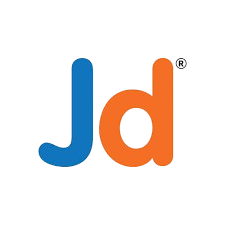
0
+
5 (2188 Ratings)


Curriculum Designed by Experts
This course delivers an instructor-led breakdown of Microsoft PowerApps. Students will be taught how to design, test and publish new applications that work with a variety of data sources. We will take users through a selection of well-crafted lessons to help them build new applications for their business.
Let’s get started with an introduction to Microsoft PowerApps. Traditionally building customized solutions for a business involved using a coding language to build an application from scratch. Typically, these solutions could often only be used within the business, making external use of the application a large hurdle to overcome. With PowerApps we can now not only easily build solutions, but we can also share them with users in our business. Deployment takes seconds and you could by testing your own app on your phone in no time. This module will overview the features of PowerApps, its benefits to a business and the variety of ways you can build and access your apps on different devices.
Topics Covered
To begin our journey through the PowerApps product, we will begin by looking at some of the templates that are available to view and edit. Microsoft’s templates are a good starting point to discover what the product is capable off and how it can be achieved. We will also take the chance to have a tour of the editor so that students are familiar with the interface that they will be using over the two-day course. We will then build our first app from a static data source, showing students how to test their changes in the app instantly without the need to publish. We will also discuss how to configure your apps settings and how to access the app once it has been saved and shared.
Topics Covered
In our next module, we will look at the options available to designers that allow them to implement their business branding. Not only will this deal with the aesthetics of your app, it will also introduce time-saving tips to help keep your branding consistent. We will also be discussing how to embed media into your app which can be useful if you are planning on an app that might promote video content.
Topics Covered
So far in the course, we would have covered the basics of adding, editing and removing controls from our applications. The drive behind this module is to provide more depth on the categories of controls which can be used on a form. Your instructor will take you through each control and discuss its purpose and configuration. Tackling the wide selection of controls will help students recognise when to use the right control.
Topics Covered
To help maintain and view essential business information, organisations often have a diverse selection of locations to keep different types of data. This could range from databases to file storage locations. PowerApps offers connections to a wide selection of data sources. We will show students to build their PowerApps to bring in data from a variety of sources as well as how they can utilise the common data source, a storage location unique to PowerApps.
Topics Covered
Module one to five discussed how to work with the original type of PowerApp known as a Canvas App, Microsoft have now introduced a second type of app known as a model-driven app. Model driven apps involve a different development process to canvas apps. We will review this development process during this module.
Model-Driven apps can be quicker to build than canvas apps, but they are less customizable and typically have a higher cost, knowing which type of app to use is not always a simple decision, we will show you the pros and cons of each.
Topics Covered
PowerApps is designed to easily connect to other business systems to read and update information. In this module we will discuss some simple ways to integrate PowerApps with key Office 365 systems including Teams, SharePoint Online and Flow. The result, is the ability to use a combination of systems to create solutions for a variety of business requirements.
Topics Covered
In our last module for Microsoft PowerApps, we will be looking at how a business can manage their existing apps. This could be using analytics to discover usage trends. We will discover how to export and import apps, so they can be reused in other locations. Finally, we will discuss how Office 365 administrators can shape the PowerApps experience with high-level settings that help ensure data segregation and security.
Topics Covered
In this first module, we will go into creating blank Flows and building them from scratch. This includes an overview of the interface and options when building Flows, and concepts such as triggers, actions, conditions, and dynamic content. Flow sharing and collaboration concepts will also be covered, as well as the mobile app.There are hundreds of available triggers in Microsoft Flow. In this module, you will learn how to use them, and we will deep dive into some specific common and important triggers. Learn about manual triggers and how initiation parameters work. This module also covers how to trigger a flow from a SharePoint list or library, how to create a flow trigger button on an item, and how to trigger a flow from Teams. Other triggers such as recurrences, Microsoft Forms, and Outlook will be demonstrated as well.
In this module, you will learn about your options when it comes to building approval processes. There is a Flow action called Approvals, that has a lot of built in functionality. There are also other ways that you can go about it. Send emails, assign tasks, assign planner tasks, send email with options. These various ways will be discussed, compared, and demonstrated. Learn about approval concepts such as dynamic multiple approvers, serial versus parallel, working with SharePoint content approval, and how to build a flow that sends overdue notifications.
This module is about conditions, loops, and some more common actions. Conditions let you create IF THEN statements and various branches of a workflow. Learn about the new interface for creating complex conditions, and other related concepts, such as switches and parallel branches. With more complex workflows, it is also important to understand looping, and different types of loops, such as apply to each, and do until. In this module, you will also learn about settings that can be configured on each action, and some useful actions such as date time, schedule, and actions that format numbers and dates.
When building Flows, it is important to understand how variables are used, and how to build expressions. There are several different types of variables, and there are over twelve different actions relating to variables and other data operations. In this module, we discuss and demonstrate these, as well as how to work with arrays (lists of things) in Flows. The expression builder is covered, with examples of how it is used, and what the possibilities are. You will learn how to parse JSON, work with HTML and CSV table actions, and you will see several advanced demonstrations of how to utilize all these more complex concepts.
Enrolling in training for the AWS Certified Developer Associate course provides you with in-demand skills such as developing, deploying, and debugging cloud-based applications. The training focuses on AWS services, best practices, and troubleshooting, enhancing your expertise in cloud development and career opportunities.
Enrolling in AWS Certified Developer Associate Course Training opens doors to career opportunities like cloud developer, DevOps engineer, and solutions architect. The certification validates your AWS skills, giving you an excellent choice for jobs using the cloud in today's competitive IT market.
AWS Certified Developer Associate Course Training is essential for cloud adoption. It equips you with skills to develop, deploy, and manage AWS applications, accelerating cloud transitions. Having this certification guarantees that you can use AWS tools. driving successful cloud adoption strategies.
AWS Certified Developer Associate Course Training enhances scalability and flexibility by imparting knowledge on how to create scalable, dynamic AWS apps. This certification ensures developers can optimize resources and handle growth efficiently, making them experts in cloud infrastructure management.
AWS Certified Developer Associate Course Training focuses on cost management by teaching how to build and optimize applications on AWS efficiently. This certification helps you reduce expenses, monitor resource usage, and implement best practices for cost-effective cloud solutions, making you a valuable asset.
Course for AWS Certified Developer Associates Essential security and compliance skills are covered in training. Learn how to secure applications, manage AWS resources, and ensure compliance with industry standards. This certification prepares you to build safe, compliant cloud solutions in today’s tech-driven world.
Radical Technologies is the leading IT certification institute in Pune, offering a wide range of globally recognized certifications across various domains. With expert trainers and comprehensive course materials, it ensures that students gain in-depth knowledge and hands-on experience to excel in their careers. The institute’s certification programs are tailored to meet industry standards, helping professionals enhance their skillsets and boost their career prospects. From cloud technologies to data science, Radical Technologies covers it all, empowering individuals to stay ahead in the ever-evolving tech landscape. Achieve your professional goals with certifications that matter.
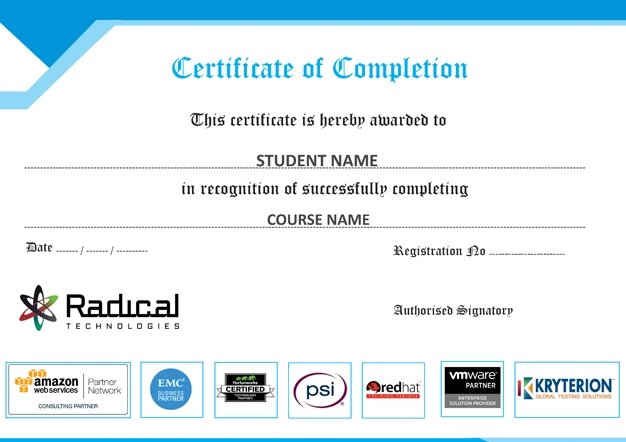


At Radical Technologies, we are committed to your success beyond the classroom. Our 100% Job Assistance program ensures that you are not only equipped with industry-relevant skills but also guided through the job placement process. With personalized resume building, interview preparation, and access to our extensive network of hiring partners, we help you take the next step confidently into your IT career. Join us and let your journey to a successful future begin with the right support.
At Radical Technologies, we ensure you’re ready to shine in any interview. Our comprehensive Interview Preparation program includes mock interviews, expert feedback, and tailored coaching sessions to build your confidence. Learn how to effectively communicate your skills, handle technical questions, and make a lasting impression on potential employers. With our guidance, you’ll walk into your interviews prepared and poised for success.
At Radical Technologies, we believe that a strong professional profile is key to standing out in the competitive IT industry. Our Profile Building services are designed to highlight your unique skills and experiences, crafting a resume and LinkedIn profile that resonate with employers. From tailored advice on showcasing your strengths to tips on optimizing your online presence, we provide the tools you need to make a lasting impression. Let us help you build a profile that opens doors to your dream career.

Infrastructure Provisioning
Implementing automated infrastructure provisioning and configuration management using Ansible. This may include setting up servers, networking devices, and other infrastructure components using playbooks and roles.

Applications Deployment
Automating the deployment and orchestration of applications across development, testing, and production environments. This could involve deploying web servers, databases. middleware, and other application components using Ansible

Continuous Integration
Integrating Ansible into CI/CD pipelines to automate software. build, test, and deployment processes. This may include automating the creation of build artifacts, running tests, and deploying applications to various environments.

Radical Technologies provided me with an excellent foundation in Power Apps. The instructors were knowledgeable and supportive throughout the course.
I was amazed by how quickly I was able to learn and create applications with Power Apps. This training has truly transformed my career prospects.
The hands-on projects offered in the course helped me gain practical experience and confidence in using Power Apps effectively.
I highly recommend Radical Technologies to anyone looking to learn Power Apps. The curriculum is comprehensive, and the instructors are fantastic.
The job placement assistance provided by Radical Technologies was invaluable. I secured a position shortly after completing the course.
The online courses offered by Radical Technologies are convenient and well-structured. I appreciate the flexibility they provide.
I was impressed by the depth of knowledge of the instructors at Radical Technologies. They were able to answer all of my questions and provide helpful guidance.
The Power Apps certification I earned through Radical Technologies has opened up new career opportunities for me. Thank you for the excellent training.
I enjoyed the interactive nature of the classes at Radical Technologies. It made learning Power Apps engaging and fun.
The support I received from the Radical Technologies community was fantastic. I felt like I was part of a supportive learning environment.
The skills I learned at Radical Technologies have been directly applicable to my job. I'm now able to create custom applications that improve efficiency in my organization.
Radical Technologies helped me transition into a new career in Power Apps development. I couldn't be happier with the results.
The real-world examples shared by the instructors were incredibly helpful in understanding how Power Apps can be applied in different industries.
I appreciate the ongoing support I receive from Radical Technologies even after completing the course. It's reassuring to know that help is always available.
The Power Apps training at Radical Technologies exceeded my expectations. I feel confident in my abilities to tackle any Power Apps project.
The instructors at Radical Technologies are passionate about what they do, and it shows in their teaching. I'm grateful for their dedication.
The Power Apps course at Radical Technologies was a game-changer for me. I now have the skills I need to excel in my career.
I was initially intimidated by Power Apps, but the instructors at Radical Technologies made the learning process accessible and enjoyable.
The Power Apps training materials provided by Radical Technologies were thorough and easy to follow. I appreciate the attention to detail.
I'm amazed by how much I was able to learn in such a short amount of time at Radical Technologies. The instructors really know their stuff.
The Power Apps certification I earned through Radical Technologies has boosted my confidence and credibility in the job market.
Radical Technologies has a supportive and encouraging learning environment. I felt comfortable asking questions and seeking help whenever I needed it.
The skills I acquired at Radical Technologies have made me a more valuable asset to my organization. I'm excited to continue growing in my career.
I appreciate the personalized attention I received at Radical Technologies. The instructors took the time to understand my learning style and cater to my needs.
The Power Apps course at Radical Technologies was worth every penny. I've already seen a return on my investment in terms of career advancement.








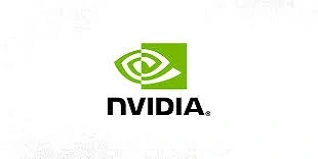
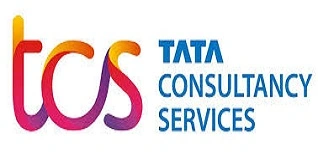



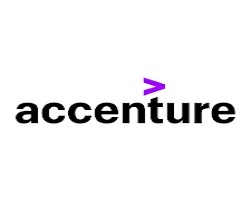
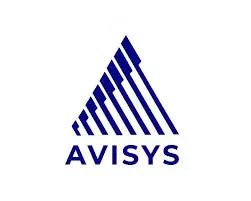
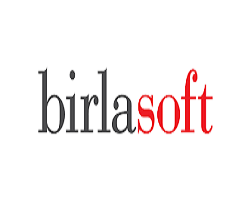
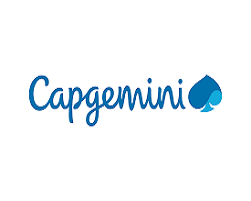
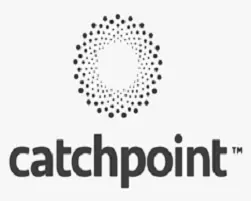


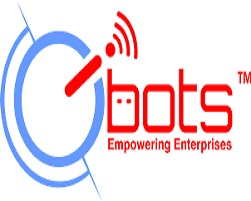





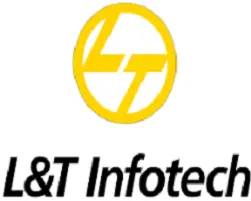
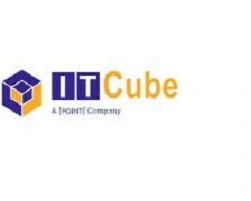


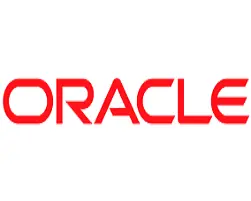


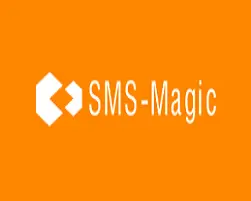
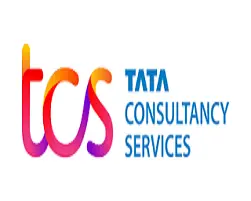

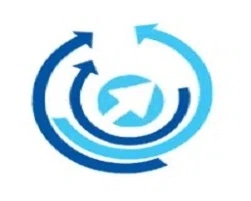

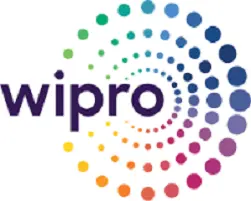
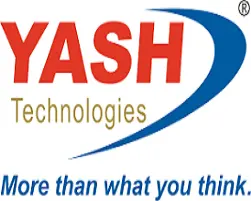

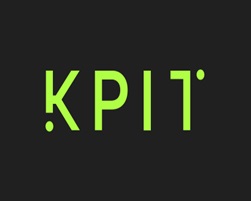

Power Apps Training refers to courses and classes designed to teach individuals how to create custom business applications without writing code using Microsoft Power Apps.
In Power Apps Training, you’ll learn how to build custom business applications, connect to various data sources, design user interfaces, and automate workflows using Microsoft Power Apps.
Yes, Power Apps Training caters to beginners and individuals with no coding experience. The courses are designed to introduce fundamental concepts and gradually build expertise in using Power Apps.
There are no specific prerequisites for Power Apps Training. Basic computer skills and familiarity with Microsoft Office applications can be beneficial, but not mandatory.
The duration of Power Apps Training can vary depending on the course format and individual learning pace. Typically, courses range from a few days to several weeks.
Yes, Microsoft offers certifications for Power Apps, and some training programs include preparation for these certifications. Upon completion of training, you can opt to take certification exams to validate your skills.
Power Apps Training is beneficial for individuals in roles such as business analysts, project managers, IT professionals, and consultants who want to create custom business solutions or streamline processes.
Yes, many institutes offer Power Apps Training online, allowing participants to learn remotely at their own pace.
The cost of Power Apps Training varies depending on the institute, course format, and included materials. Online courses may be more affordable compared to in-person training.
Yes, most Power Apps Training programs include hands-on projects where participants can apply the concepts they’ve learned to real-world scenarios.
Some institutes offer job placement assistance as part of their Power Apps Training programs. However, it’s essential to inquire about this service before enrolling in a course.
Power Apps Training focuses on building custom applications, while Power Automate Training emphasizes automating workflows and processes using Microsoft Power Automate.
Yes, Microsoft provides free documentation, tutorials, and learning paths for Power Apps on their official website, which can supplement your training.
Some training providers offer customizable training options where you can tailor the curriculum to address your organization’s specific requirements or skill gaps.
Some training programs offer post-training support, such as access to forums, communities, or mentorship opportunities, to help participants continue learning and troubleshoot issues.
Ambegaon Budruk | Aundh | Baner | Bavdhan Khurd | Bavdhan Budruk | Balewadi | Shivajinagar | Bibvewadi | Bhugaon | Bhukum | Dhankawadi | Dhanori | Dhayari | Erandwane | Fursungi | Ghorpadi | Hadapsar | Hingne Khurd | Karve Nagar | Kalas | Katraj | Khadki | Kharadi | Kondhwa | Koregaon Park | Kothrud | Lohagaon | Manjri | Markal | Mohammed Wadi | Mundhwa | Nanded | Parvati (Parvati Hill) | Panmala | Pashan | Pirangut | Shivane | Sus | Undri | Vishrantwadi | Vitthalwadi | Vadgaon Khurd | Vadgaon Budruk | Vadgaon Sheri | Wagholi | Wanwadi | Warje | Yerwada | Akurdi | Bhosari | Chakan | Charholi Budruk | Chikhli | Chimbali | Chinchwad | Dapodi | Dehu Road | Dighi | Dudulgaon | Hinjawadi | Kalewadi | Kasarwadi | Maan | Moshi | Phugewadi | Pimple Gurav | Pimple Nilakh | Pimple Saudagar | Pimpri | Ravet | Rahatani | Sangvi | Talawade | Tathawade | Thergaon | Wakad
I had an amazing experience with this service. The team was incredibly supportive and attentive to my needs. The quality of the work exceeded my expectations. I would highly recommend this to anyone looking for reliable and professional service."
I had an amazing experience with this service. The team was incredibly supportive and attentive to my needs. The quality of the work exceeded my expectations. I would highly recommend this to anyone looking for reliable and professional service."
I had an amazing experience with this service. The team was incredibly supportive and attentive to my needs. The quality of the work exceeded my expectations. I would highly recommend this to anyone looking for reliable and professional service."
I had an amazing experience with this service. The team was incredibly supportive and attentive to my needs. The quality of the work exceeded my expectations. I would highly recommend this to anyone looking for reliable and professional service."
I had an amazing experience with this service. The team was incredibly supportive and attentive to my needs. The quality of the work exceeded my expectations. I would highly recommend this to anyone looking for reliable and professional service."
The AWS Certified Developer Associate Certification is a highly sought-after credential for professionals aiming to validate their expertise in developing, deploying, and maintaining applications on the Amazon Web Services (AWS) platform. Designed for individuals with experience in software development and cloud solutions, this certification demonstrates a developer’s ability to create and optimize scalable applications using AWS services.
This certification is specifically crafted to equip developers with the knowledge to build robust, secure, and efficient cloud applications. AWS offers a comprehensive suite of tools, and through this certification, developers learn to integrate various AWS services seamlessly into their projects. From writing code that interacts with AWS APIs to understanding how to use key services like Lambda, DynamoDB, and S3, this certification ensures candidates are fully equipped to tackle modern cloud development challenges.
This certification is ideal for:
While there are no mandatory prerequisites, it is recommended that candidates have:
The AWS Certified Developer Associate Certification is a powerful validation of your ability to develop and maintain applications in the AWS environment. By earning this certification, you are not just demonstrating your technical skills but also positioning yourself as a forward-thinking professional ready to embrace the future of cloud computing.
The AWS Certified Developer Associate Certification opens doors to a wide range of applications in cloud development and beyond, making certified professionals highly valuable across multiple industries. Here are key areas where AWS Developer Associates can apply their skills:
1. Building Scalable Applications
AWS Certified Developer Associates are proficient in developing highly scalable, flexible, and reliable applications using AWS cloud services. They leverage tools such as Amazon EC2, AWS Lambda, Elastic Beanstalk, and Amazon RDS to design applications that scale automatically based on demand, ensuring optimal performance and resource utilization.
2. Serverless Application Development
One of the most in-demand skills for cloud developers is serverless computing. AWS Developer Associates use services like AWS Lambda and API Gateway to build applications without managing servers. These serverless architectures reduce operational overhead, optimize costs, and improve application response times by automatically scaling in real-time.
3. Cloud Migration
Certified developers are involved in migrating on-premise applications to the AWS cloud. This involves rewriting legacy code to work with AWS services, ensuring compatibility, security, and efficiency. AWS tools like AWS Migration Hub and CloudEndure enable developers to seamlessly transition applications and data to the cloud with minimal disruption.
4. Integrating Third-Party Services
AWS Developer Associates often work on integrating third-party services and APIs with AWS-powered applications. Using AWS SDKs, developers connect external services, such as payment gateways, messaging platforms, or data analytics tools, with AWS services like S3, DynamoDB, and SNS to create fully integrated solutions.
5. Automated CI/CD Pipelines
Professionals with this certification are skilled in automating the development lifecycle using AWS’s Continuous Integration/Continuous Deployment (CI/CD) tools. By setting up pipelines with AWS CodePipeline, CodeBuild, and CodeDeploy, developers ensure rapid, reliable updates to applications without manual intervention. This allows businesses to deliver features faster and maintain a high level of code quality.
6. Mobile and Web Application Development
AWS Certified Developer Associates play a crucial role in developing mobile and web applications by using services such as Amazon API Gateway, AWS Amplify, and AWS AppSync. They build APIs that serve as the backbone for mobile apps or single-page applications (SPAs), providing backend functionality like user authentication, real-time data sync, and content delivery with CloudFront.
7. Developing Secure Cloud Applications
Cloud security is a critical component of any application. AWS Developer Associates implement security measures using AWS Identity and Access Management (IAM), AWS Shield, and Amazon VPC to ensure data protection, secure APIs, and restrict access to sensitive resources. Their ability to integrate encryption and key management tools further strengthens application security.
8. Microservices Development
Microservices architecture is a popular approach in cloud application development, and AWS Developer Associates are skilled in building, deploying, and managing microservices using AWS tools. They utilize services like Amazon ECS and AWS Fargate to manage containers and run microservices independently, ensuring modular and scalable application architecture.
9. Monitoring and Optimization
Certified AWS Developers use tools like Amazon CloudWatch and AWS X-Ray to monitor application performance, track logs, and trace requests. They are responsible for identifying bottlenecks, troubleshooting issues, and optimizing resource utilization to maintain cost-effective, high-performance cloud environments.
10. Data-Driven Applications
Certified developers are capable of building data-driven applications by integrating services like Amazon RDS, DynamoDB, and Redshift into their solutions. These developers design systems that store, process, and analyze vast amounts of data, enabling organizations to make real-time, data-driven decisions.
11. AI/ML Integration
AWS Developer Associates can also integrate Artificial Intelligence (AI) and Machine Learning (ML) functionalities into applications using services like Amazon SageMaker, AWS Rekognition, and AWS Lex. They incorporate these services to enhance applications with capabilities such as image recognition, predictive analytics, natural language processing, and chatbots.
12. IoT Applications
With the rise of the Internet of Things (IoT), AWS Developer Associates apply their skills to develop IoT applications using services like AWS IoT Core and AWS Greengrass. These applications collect, process, and analyze data from connected devices in real-time, powering smart devices and industrial automation.
13. Cost Optimization for Applications
Cost management is a key part of cloud application development. AWS Certified Developer Associates understand the nuances of AWS Pricing and can configure applications to optimize resource usage and reduce costs. They employ features such as Auto Scaling, EC2 Spot Instances, and S3 Lifecycle Policies to ensure that resources are utilized efficiently.
Welcome to Radical Technologies, the premier institute in Pune dedicated to providing comprehensive training in Microsoft Power Apps and Power Platform. With a focus on empowering individuals with the skills and knowledge needed to succeed in today’s digital landscape, we offer a range of courses and certifications tailored to meet the diverse needs of our students.
At Radical Technologies, we understand the importance of staying ahead in the ever-evolving world of technology. That’s why our expert instructors, who are seasoned professionals in the field, are committed to delivering top-notch training that equips students with practical, hands-on experience.
Whether you’re a beginner looking to explore the possibilities of Power Apps or an experienced professional seeking to enhance your expertise, our courses cater to all skill levels. From Power Apps basics to advanced topics like Power Automate integration and AI Builder implementation, we cover it all.
Our state-of-the-art facilities provide an optimal learning environment, equipped with the latest tools and resources to facilitate effective learning. Additionally, our flexible training options, including online courses and in-person classes, ensure that you can learn at your own pace and convenience.
At Radical Technologies, we go beyond just imparting knowledge; we also offer job placement assistance to help our students kickstart their careers in the industry. With our strong network of industry partners and dedicated career support team, we strive to connect our graduates with rewarding employment opportunities.
Whether you’re looking to enhance your skills, advance your career, or embark on a new professional journey, Radical Technologies is here to support you every step of the way. Join us today and unlock the full potential of Microsoft Power Apps and Power Platform.

(Our Team will call you to discuss the Fees)
